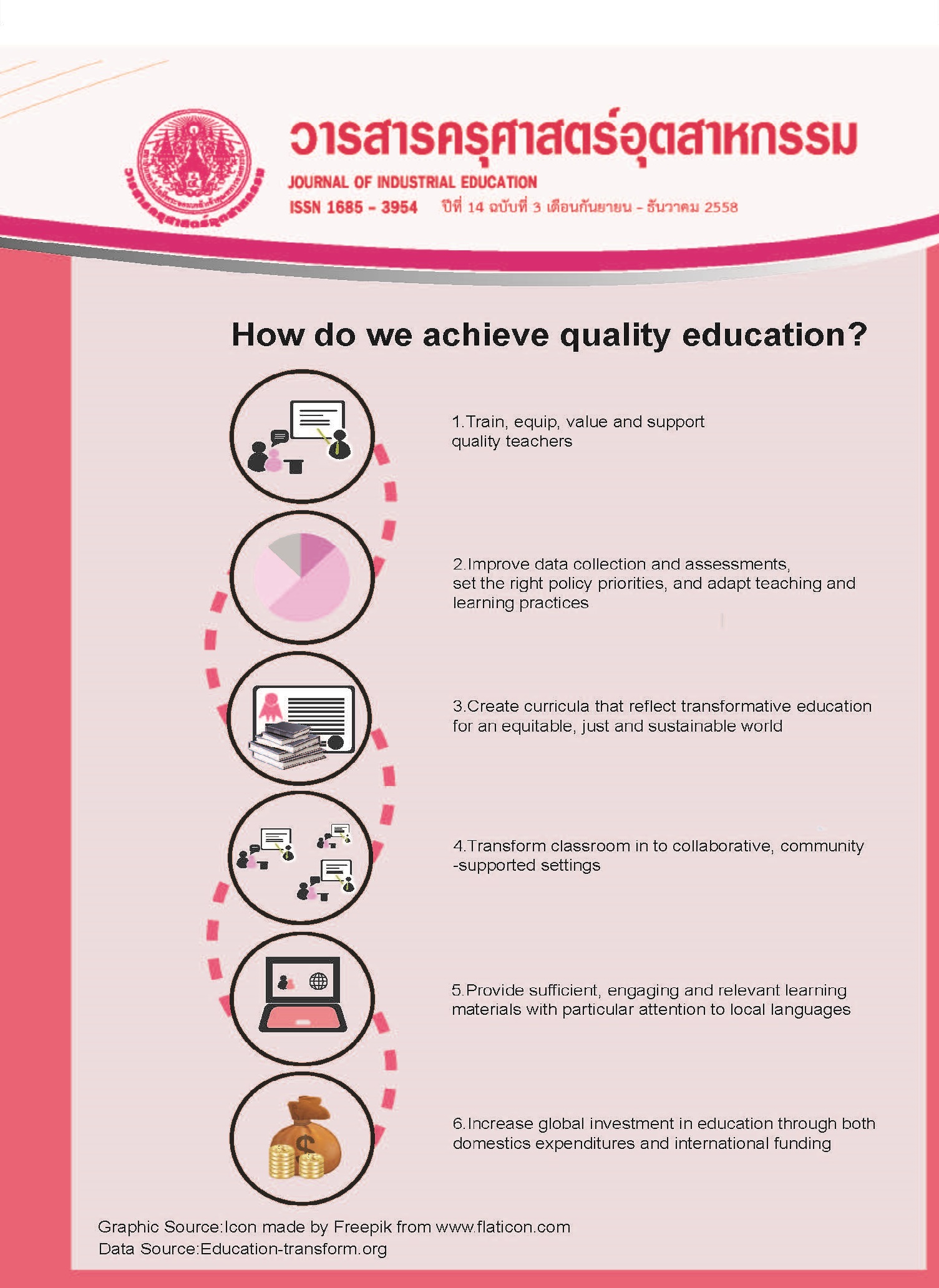Study and Development Contemporary Product from Bulrush Residue
Main Article Content
Abstract
The purposes of this research were to 1) Study transformational process of bulrush residue, and 2) Design product made from bulrush residue with added value and contemporary design. 3) Assess satisfaction with the products from bulrush residue from manufacturers, suppliers and other interested handicraft products. The sample subjects consisted of a group of 103 members of Thale Noi Community Handicraft Producing Group, 28 dealers of bulrush handicraft products of Thale Noi community, and 375 interested people and tourists who visited Thale Noi park selected through a simple random sampling technique.
According to the research findings, the results from the evaluation of the handcrafted products were as follows Watch Design 2 earned maximum satisfaction (= 5.00) office supply products Design 1 earned a high degree of satisfaction (
= 4.37) patterned products for table and chair surfaces Design 3 earned a high degree of satisfaction (
= 4.25) and planting pots Design 1 earned maximum satisfaction (
= 4.00). It can be summarized, therefore, that the designs for the four contemporary products made from gray rush (sledge) remnants earned the satisfaction of the sample group in terms of design (
=4.87) and satisfaction in product quality (
= 4.86 ).
In conclusion The results of the study and development of bulrush residue contemporary product, 4 pieces total, are suitably designed and developed contemporary products. Furthermore, the following 5 factors are involved: contemporary product design, local folk art psychological value, utilization, product cost and added value.
Article Details
"The opinions and contents including the words in papers are responsibility by the authors."
"ข้อคิดเห็น เนื้อหา รวมทั้งการใช้ภาษาในบทความถือเป็นความรับผิดชอบของผู้เขียน"
References
Beuakwan, B., et al. 2011. Development of Bulush Residue for Health Care Products Using Local Wisdom. Community Wisdom College Thaksin University.
[2] วัชรินทร์ จรุงจิตสุนทร. 2548. หลักการออกแบบและแนวคิดการออกแบบผลิตภัณฑ์. กรุงเทพฯ : แอ๊ปป้าพริ้นติ้งกรุ๊ป.
[3] วัฒนะ จูฑะวิภาต. 2545. ศิลปะพื้นบ้าน. กรุงเทพฯ: สิปประภา.
[4] ศิริพรณ์ ปีเตอร์. 2550. มนุษย์และการออกแบบ.กรุงเทพฯ : โอเดียนสโตร์.
[5] มณฑลี ศาสนนันทน์. 2550. การออกแบบผลิตภัณฑ์ เพื่อการสร้างสรรค์นวัตกรรมและวิศวกรรมย้อนรอย. กรุงเทพฯ: สำนักพิมพ์แห่งมหาวิทยาลัยธรรมศาสตร์.
[6] ชูศักดิ์ เดชเกรียงไกรกุล และนิทัศน์ คณะวรรณ. การตลาด 1 ตำบล 1 ผลิตภัณฑ์ และธุรกิจ SMEs.กรุงเทพฯ : ซีเอ็ดยูเคชั่น.
[7] ธีระชัย สุขสด. 2544. การออกแบบผลิตภัณฑ์อุตสาหกรรม. กรุงเทพฯ: โอเดียนสโตร์.
[8] ชวลิต เปี่ยมวาณี ปริยาภรณ์ ตั้งคุณานันต์ และจิระเสกข์. 2554. ความพึงพอใจของผู้บริโภคที่มีต่อส่วนประสมการค้าปลีกในไฮเปอร์มาร์เก็ตในเขตจังหวัดปทุมธานี. วารสารครุศาสตร์อุตสาหกรรม. 10(3), น. 115-128.
Piamwanee, Ch. Tangkunanun, P.and Sake, J. 2011.Customer Satisfaction Towards Retailing Mix of Hypermarket in Pathumthani Province. Journal of Industrial Education. 10(3), p. 115-128.

